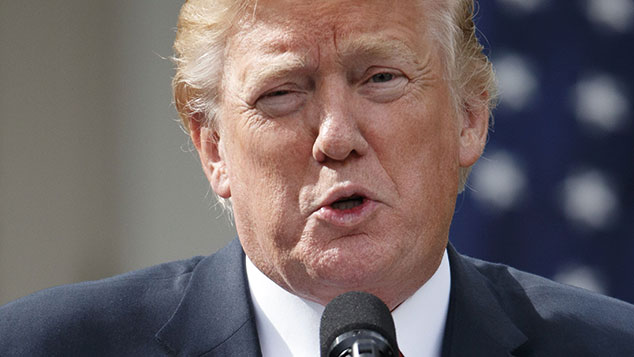
An “army” of lobbyists “stormed Capitol Hill” last Tuesday, note Ana Swanson and Natalie Kitroeff in The New York Times. They fear president Donald Trump will “cripple or kill” the 23-year-old North American Free Trade Agreement (Nafta), which comprises Mexico, Canada and the US. The Trump administration has ratcheted up the pressure for major changes to the agreement that Canadian and Mexican negotiators say are “non-starters”.
The “poison pills” that could kill off the deal include demands that Nafta “sunset” (be renewed) every five years and that 50% of parts used in cars made in the Nafta area zone be sourced in the US, says Edward Luce in the Financial Times.
The first is like “putting a recurring expiry date in a marriage… divorce becomes inevitable”. The second would “shred” well-established supply chains. There’s no sign Trump is prepared to water down his “extravagant demands”. He insists that Nafta puts the US at an unfair disadvantage, highlighting America’s trade deficit with Mexico and the loss of US manufacturing jobs.
It’s nonsense, of course, says Elena Holodny on Business Insider. Altering the agreement would neither reduce the trade deficit nor “meaningfully” increase manufacturing jobs. Other advanced economies – including the eurozone, the UK and Japan – have seen similar declines in manufacturing. They correlate with China joining the World Trade Organisation in 2001 and the financial crisis of 2007-8. Automation has also played a part. Tearing up the deal completely could have major negative effects. According to the US Chamber of Commerce, 14 million jobs are directly attributable to Nafta.
Mark Zandi, chief economist at Moody’s Analytics, told The New York Times that it would have a stunting effect on the economy akin to a $150bn tax increase. Restoring 20% tariffs on exports, an idea Trump has mooted, would be enough to “stall” the economy in 2019 and push Mexico into recession, triggering a “wave” of illegal immigration. The uncertainty is already damaging the economy, says Ted Genoways in The Washington Post.
America’s Nafta partners are hedging against the deal’s collapse. In 2016, Mexico accounted for nearly 12% of all American agricultural exports. It is now forging new bilateral trade agreements, particularly with South America. This summer’s Mexican orders for American corn and soybeans are down 6% and 15% respectively.
Nafta may have imposed some costs, but they are relatively minor and “mostly in the rearview mirror”, says Paul Krugman in The New York Times. Businesses have spent 23 years building their competitive strategies around an integrated North American market. Breaking it up now would be highly disruptive – but “fear the worst” because this may boil down to Trump’s “fragile ego”. With his “gleeful sabotage” of Obamacare, he has shown that he is prepared to pursue policies that not only carry huge human but also political costs; he and his party are likely to be blamed for the damage.
But does he have the power to terminate it, asks Shawn Donnan in the Financial Times. The US constitution “clearly assigns powers over international commerce to Congress”. The first, and last, time a president pulled out of a trade deal was in 1866, but then-president Andrew Johnson did so with Congressional approval. The real danger is that “a quarter of the global economy ends up with a… zombie Nafta”, which lives on in “unhealthy limbo”, causing uncertainty and disruption.
It may sound “preposterous”, but look at the Iran deal, the Paris Agreement and the way Trump has treated the “Dreamers”, immigrants brought to the US as children that he wants to deport. There is no shortage of precedent in the Trump administration for “messy halfway houses”.